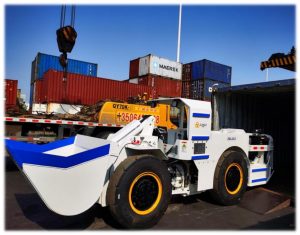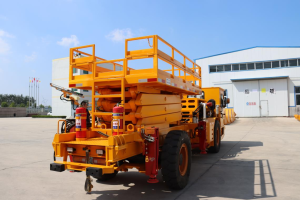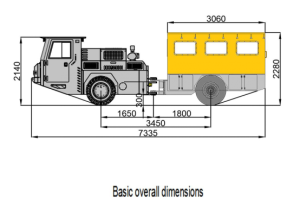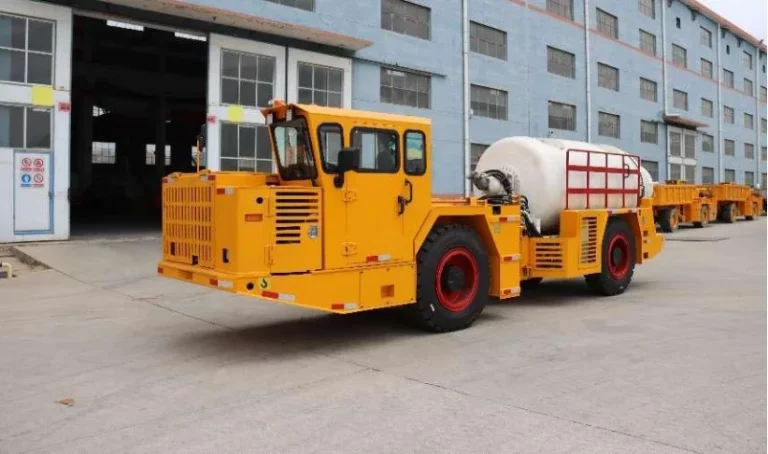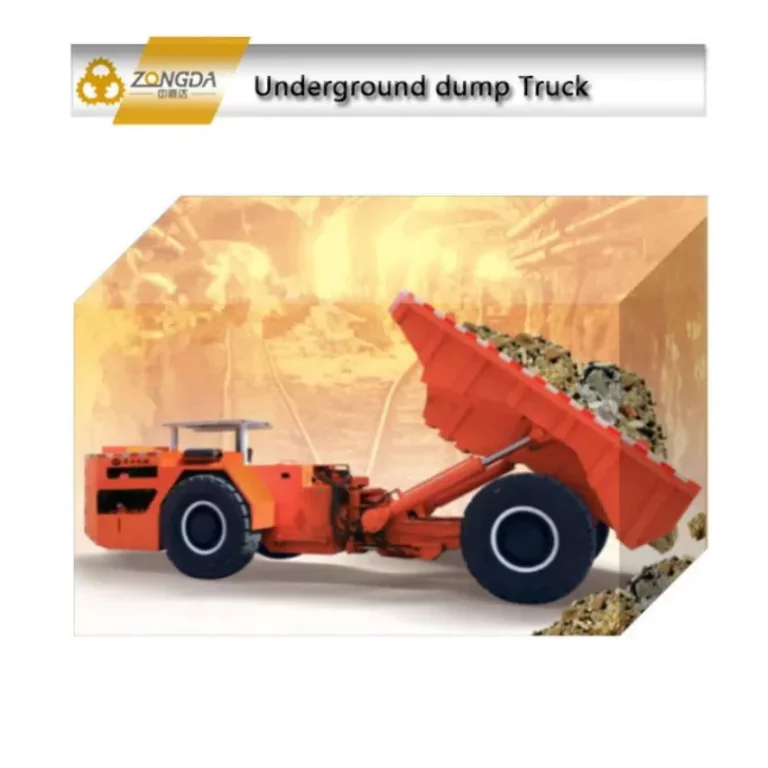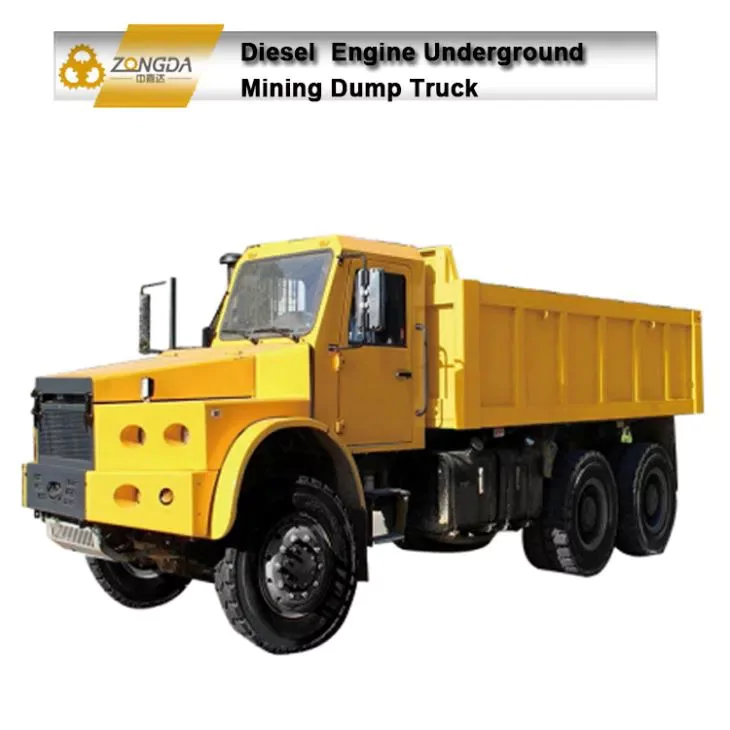The evolution of underground mining truck brake systems reflects the industry’s commitment to enhancing safety and operational efficiency. Historically, mining trucks employed basic braking mechanisms that often struggled under the demands of harsh environments. As the industry advanced, so too did the technology, leading to significant innovations designed to meet the unique challenges of underground operations. These advancements have been essential given that the requirements for braking systems in underground mining differ markedly from those on the surface due to environmental concerns and operational dynamics.
Evolution of Underground Mining Truck Brake Systems
Historical Overview of Mining Truck Brake Technology
In the early days, brake systems in mining trucks were rudimentary and primarily relied on mechanical linkages. The effectiveness of these systems was often compromised by the dusty, damp environments found in underground mines. As technology progressed, hydraulic systems began to emerge, offering improved responsiveness and reliability. However, these systems still faced limitations in terms of maintenance and performance under varying conditions. This historical context establishes the foundation for understanding the evolution toward more advanced technologies currently in use.
Innovations in Modern Brake Systems for Underground Mining Trucks
Today, modern underground mining trucks integrate advanced braking technologies such as pneumatic systems, hydraulic brakes, and electronic control modules. These innovations have significantly increased safety, enabling operators to respond more effectively to emergencies and reduce stopping distances in confined spaces. Furthermore, the rise of autonomous mining trucks has led to the development of integrated braking systems that ensure optimal performance and safety even in the most challenging environments.
Differences Between Surface and Underground Mining Brake Requirements
The contrasting conditions between surface and underground mining necessitate different specifications for braking systems. Underground operations often involve steeper gradients, tighter spaces, and greater exposure to moisture and debris, which can affect brake performance. Consequently, underground mining trucks are designed with specialized brakes that can withstand these conditions, ensuring both operational efficiency and safety for their operators and equipment.
Key Components of Modern Underground Mining Truck Brake Systems
Hydraulic Brake Systems
Hydraulic brake systems are a cornerstone of modern underground mining truck design. These systems operate through the transmission of hydraulic fluid under pressure, which activates the brake pads against the rotors. This design offers rapid response times and smooth braking, crucial in preventing accidents in the confined spaces of underground operations. Additionally, the hydraulic systems are known for their reliability and ease of maintenance compared to older mechanical systems, further enhancing their safety performance.
Operational Mechanisms
The operational mechanism of hydraulic brakes involves a master cylinder that creates pressure in the brake fluid, which is then transmitted to the brake calipers. This pressure causes the brake pads to clamp onto the rotors, ensuring effective deceleration. The design allows for precise control of braking force, adapting to the varying load conditions typical in mining operations.
Advantages in Safety Performance
The advantages of hydraulic brake systems in terms of safety performance are significant. Their ability to provide strong and consistent braking power minimizes the risk of accidents, especially when laden with heavy loads. Moreover, the reduced likelihood of brake fade, a common issue in steep terrains, further supports enhanced operational safety.
Pneumatic Brake Systems
Pneumatic brake systems rely on compressed air to operate, offering an alternative to hydraulic systems. These systems are particularly beneficial in larger mining trucks where the weight necessitates powerful braking solutions.
How They Work
The functionality of pneumatic brake systems is based on the principles of air pressure. Compressed air is stored in a reservoir and released to activate the brakes. The rapid response times of pneumatic systems allow for increased braking power, which is especially crucial in emergency situations.
Pros and Cons in Underground Conditions
While pneumatic systems offer substantial braking force, they may also face challenges in underground environments. Dust and moisture can interfere with the system’s functionality, potentially leading to reduced efficiency. However, when properly maintained, these systems can provide reliable performance in demanding conditions.
Electronic Brake Control Modules (EBCMs)
Electronic Brake Control Modules (EBCMs) represent a technological advancement in brake systems for underground mining trucks. These modules integrate various sensors and control systems to optimize braking performance and ensure safety.
Functions and Benefits
EBCMs monitor critical data such as wheel speed, brake pressure, and system temperature. This information allows for real-time adjustments to braking performance, maximizing control and effectiveness. The ability to respond dynamically to changing conditions enhances safety, making EBCMs a vital component of modern underground mining truck brake systems.
Integration with Overall Vehicle Safety Systems
The integration of EBCMs with other vehicle safety systems, such as anti-lock braking systems (ABS) and traction control, creates a comprehensive approach to supporting operators in hazardous environments. This integration allows for a more holistic understanding and management of vehicle dynamics, reducing risks and improving overall safety outcomes.
Role of Emergency Brakes in Enhancing Safety
Design Principles of Emergency Braking Systems
Emergency braking systems are designed with the primary goal of providing rapid deceleration in critical situations. These systems often include redundant features to ensure reliability, such as various fail-safe mechanisms that activate if the primary system fails. The design principles focus on maximizing responsiveness while maintaining control, critical for operators navigating the risks associated with underground mining.
Real-World Applications and Effectiveness
In practice, emergency braking systems have demonstrated their effectiveness in preventing accidents. By providing a means to halt operations quickly during unforeseen circumstances, operators can proactively mitigate the potential for collisions or other hazards. The real-world applications of these systems are a testament to their importance in creating safer underground mining conditions.
Case Studies of Accident Prevention
Several case studies illustrate the effectiveness of emergency braking systems in underground mining. Instances where properly functioning systems have prevented accidents highlight the importance of regular maintenance and training for operators to ensure preparedness for emergency situations. These real-life examples underscore the critical role that advanced braking technologies play in enhancing safety.
Challenges and Solutions in Implementing Advanced Braking Technologies
Environmental Factors Affecting Brake Performance
The unique environmental factors present in underground mining can pose significant challenges to brake system performance. Dust, moisture, and temperature fluctuations can all affect the efficacy of braking systems in these challenging environments.
Dust, Moisture, and Temperature Considerations
Dust can accumulate on brake components, leading to reduced friction and effectiveness. Similarly, moisture can cause corrosion and freezing in pneumatic systems, further complicating performance. Temperature variations can also affect the physical characteristics of brake materials, potentially leading to failures.
Mitigation Measures
To mitigate these challenges, regular inspections, and cleaning protocols are crucial. Additionally, advancements in materials technology have led to the development of more durable, corrosion-resistant components that withstand the harsh conditions of underground operations.
Maintenance Challenges for Advanced Braking Systems
Advanced braking technologies require a more sophisticated approach to maintenance. The complexity of modern systems necessitates not just scheduled maintenance protocols but also specialized training for maintenance staff.
Scheduled Maintenance Protocols
Implementing scheduled maintenance protocols ensures that potential issues are identified and addressed proactively. Regular checks on key components such as hydraulic fluid levels, air pressure, and electronic systems can prevent failures and enhance safety.
Training Requirements for Maintenance Staff
Training requirements for maintenance staff are equally important. Ensuring that personnel are well-versed in the operation and troubleshooting of advanced braking systems will enhance the reliability of these crucial safety features. Adequate training ensures that maintenance staff can respond effectively to any challenges that arise, maintaining the overall safety of the operation.
Future Trends in Underground Mining Truck Braking Technologies
Emerging Innovations in Braking Materials and Design
The landscape of underground mining truck braking systems is witnessing a wave of innovations driven by advancements in materials science and engineering. High-performance materials, such as carbon-ceramic composites, are being integrated into brake pad and disc designs, offering increased thermal stability and resistance to wear under extreme conditions. These materials enhance the durability of brake components, directly impacting the lifespan of the braking systems and reducing maintenance costs. Additionally, developments in friction materials are improving performance across a wider range of temperatures, contributing to safer braking in the varied environments found in underground operations.
Modern design approaches, such as the integration of computer-aided design (CAD) technology, allow for precise simulations of braking system behavior under different operational conditions. This not only ensures optimal performance but also facilitates rapid prototyping and iterative design improvements, resulting in sophisticated brake systems tailored to meet the unique requirements of underground mining. Innovations in brake system design also focus on lightweight construction without compromising strength, which is crucial in enhancing energy efficiency in underground mining trucks.
Potential Impact of Autonomous Vehicles on Brake System Designs
The emergence of autonomous vehicles in underground mining operations is reshaping the design and implementation of braking systems. As these vehicles navigate complex environments without human interaction, their braking systems must incorporate advanced technologies that ensure rapid and effective response to unexpected obstacles. Predictive algorithms utilize comprehensive sensor data to anticipate potential hazards, enabling proactive braking measures that contribute to overall operational safety.
Furthermore, autonomous systems are integrating machine learning capabilities, allowing the braking systems to adapt and optimize their performance based on historical data and real-time conditions. This self-learning dynamic offers significant improvements in responsiveness and efficiency, as the systems continuously refine their algorithms for braking performance in various scenarios. As the industry embraces automation, understanding the interplay between autonomous technology and braking system design will be essential for enhancing safety and minimizing accident risks.
Introduction to Zongda’s Contributions in the Industry
Overview of Zongda’s Role in Mining Technologies
Zongda has emerged as a leading player in the underground mining technology sector, driving significant advancements that enhance both safety and efficiency in mining operations. Their commitment to research and development has led to groundbreaking innovations in the field of mining truck brake systems. Zongda not only produces reliable and robust braking solutions but also engages in strategic partnerships with mining companies to address specific operational needs and challenges within the industry.
The company’s focus on integrating the latest technologies into their products—such as automation, smart sensors, and advanced materials—positions them as a key contributor in the evolution of mining technologies. Zongda’s emphasis on safety and operational excellence resonates deeply with the core demands of underground mining operations, making them a trusted name among operators worldwide.
Specific Advancements by Zongda in Underground Mining Truck Brakes
Zongda has introduced several innovative braking technologies that specifically cater to the rigorous demands of underground mining trucks. Their hydraulic brake systems, characterized by robust engineering and advanced componentry, ensure high reliability under strenuous conditions. These systems are designed to withstand high levels of exposure to dust and moisture, a common challenge in underground settings, thereby maintaining optimal performance and safety.
In addition, Zongda has been at the forefront of developing Emergency Brake Control Systems that provide swift response times in critical situations. These systems feature redundant safety mechanisms and are backed by extensive testing to guarantee their effectiveness. Moreover, Zongda’s integration of electronic brake control modules (EBCMs) into their braking systems exemplifies their commitment to leveraging electronic systems for enhanced safety. These EBCMs provide real-time monitoring and adjustments, ensuring that underground mining trucks can react quickly and efficiently to varying load and operational conditions.
Industry Standards and Regulatory Compliance
Overview of Global Standards Governing Mining Truck Brakes
The operation of underground mining trucks is subject to stringent global standards governing the safety and performance of their braking systems. Organizations such as the International Organization for Standardization (ISO) and the American National Standards Institute (ANSI) have established regulations to ensure that mining trucks meet specific safety criteria. These standards emphasize the importance of maintaining effective braking performance under a variety of environmental conditions, which is particularly crucial for underground operations.
Compliance with such standards not only guarantees a minimum level of safety but also enhances public trust and accountability within the industry. Manufacturers are required to conduct rigorous testing and thorough documentation of their braking systems to ensure compliance, thus promoting continuous improvement and technological advancements across the sector. Understanding the prevailing standards and regulations is critical for mining operators aiming to minimize risks and adhere to best practices in underground operations.
Zongda’s Practices Aligning with Industry Regulations
In line with the industry’s regulatory frameworks, Zongda has implemented comprehensive practices to ensure that their braking systems meet and exceed established standards. This includes regular audits and evaluations of their manufacturing processes to adhere to safety and quality benchmarks. Zongda also invests heavily in research and development, seeking continuous feedback from industry stakeholders to refine their products in alignment with evolving regulations.
Additionally, Zongda’s commitment to safety and compliance extends to providing training and resources for mining operators. This emphasis on education ensures that operators are well-versed in safety protocols and can effectively maintain and operate advanced braking systems. Through these practices, Zongda not only ensures compliance with industry standards but also reinforces its role as a leader in promoting safety and innovation within the underground mining sector.
In conclusion, the commitment to enhancing safety through advanced braking systems in underground mining trucks is not just about technological innovation; it reflects a broader commitment to operational excellence and regulatory compliance. As the industry continues to evolve, understanding these dynamics will be crucial for ensuring both safety and efficiency in underground mining operations.


